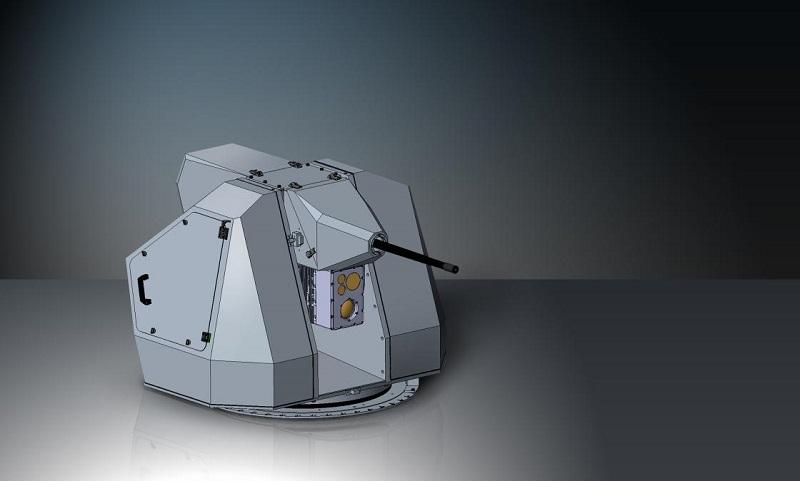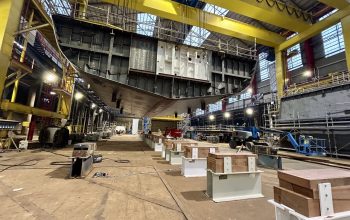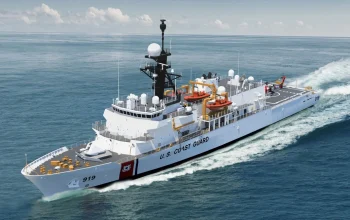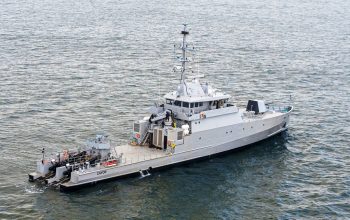Already aboard several naval platforms worldwide, Leonardo’s LIONFISH® family of defense systems has now also been selected by the Royal Netherlands Navy. The Navy has chosen the “LIONFISH® Top” variant to equip its Holland-class patrol vessels, LPD (Landing Platform Dock) and JSS (Joint Support Ship) units, Johan de Witt and Karel Doorman classes, and Den Helder-class Combat Support Ship. The LIONFISH® Top is one of three 12.7mm variants in the new family of remotely-controlled naval turrets. “Ultralight” and “Inner Reloading” models are also available in the same caliber. The company also offers a 20mm “LIONFISH® 20” model. The choice of LIONFISH® highlights the strategic relationship between Leonardo and the Royal Netherlands Navy, which also recently chose Leonardo’s OTO 127/64 LW Vulcano systems for its four De Zeven Provinciën class multi-role units.
The LIONFISH® 12.7 Top weighs less than 300 kg and is particularly effective against close threats and in asymmetric scenarios (ASymmetric Warfare – ASyW). Effectiveness and accuracy, even at long range, are guaranteed by the use of a cooled infrared sensor that integrates Leonardo’s Mini Colibrì optics. The LIONFISH® 12.7 Top can be fitted with different types of 12.7 mm weapons. The weapon is fed by a 400 ready-to-fire rounds magazine, compatible with a wide variety of 12.7 x 99 NATO standard ammunitions such as AP, API, APT, APIT, M33 ball. The aiming system is fully stabilized in elevation and azimuth using powerful servo-systems in a closed loop with both two independent gyros and two tachometers for redundancy. All the components are fully protected by a stealth
shield to minimize the RCS and allow the operation in the most severe environments.
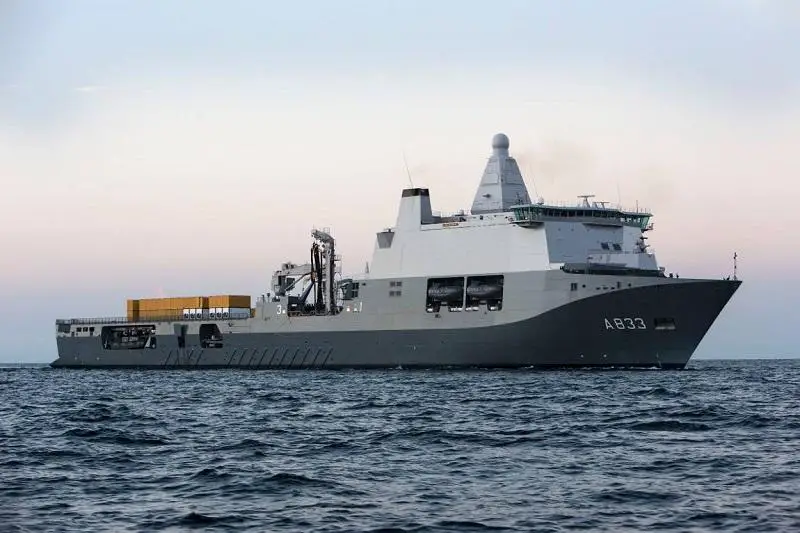
The LIONFISH® 12.7 Top is remotely controlled through its own Local Control Console and it can autonomously determine the stabilized firing coordinates by performing ballistic and target trajectory calculations. The Electro-Optical Director is constituted of a highly accurate sensors suite (with an automatic tracking functionality) constituted of a daylight camera, an IR camera, and a LASER Range Finder. The LIONFISH® 12.7 Top is equipped with handles in the external rear part of the cradle for manual conduction and firing of the gun in case of emergency. This is common across the whole turret family, which can also integrate an uncooled sensor. Depending on the technology used, the detection range can be up to 12 km.
The LIONFISH® family stands out for its modularity, lightweight, and common architecture, which allow the turrets to be installed and operated onboard secondary platforms, both as a primary and secondary defense system, with no deck penetration. LIONFISH Turrets are conceived for those Customers looking for a versatile gun system, usable in a broad set of applications like border control, maritime traffic interdiction, law enforcement, self-protection, up to Anti-Submarine Warfare. All systems in the family can self-calculate firing solutions and engage fast-moving threats, even when installed on high-speed platforms. Drawing on its experience developing advanced technologies such as the OTO 76/62 Super Rapido and the OTO 127/64 LW Vulcano, Leonardo has developed its new defense systems to meet market requirements, that are increasingly looking towards compact and stealth technologies, including to equip uncrewed platforms.


